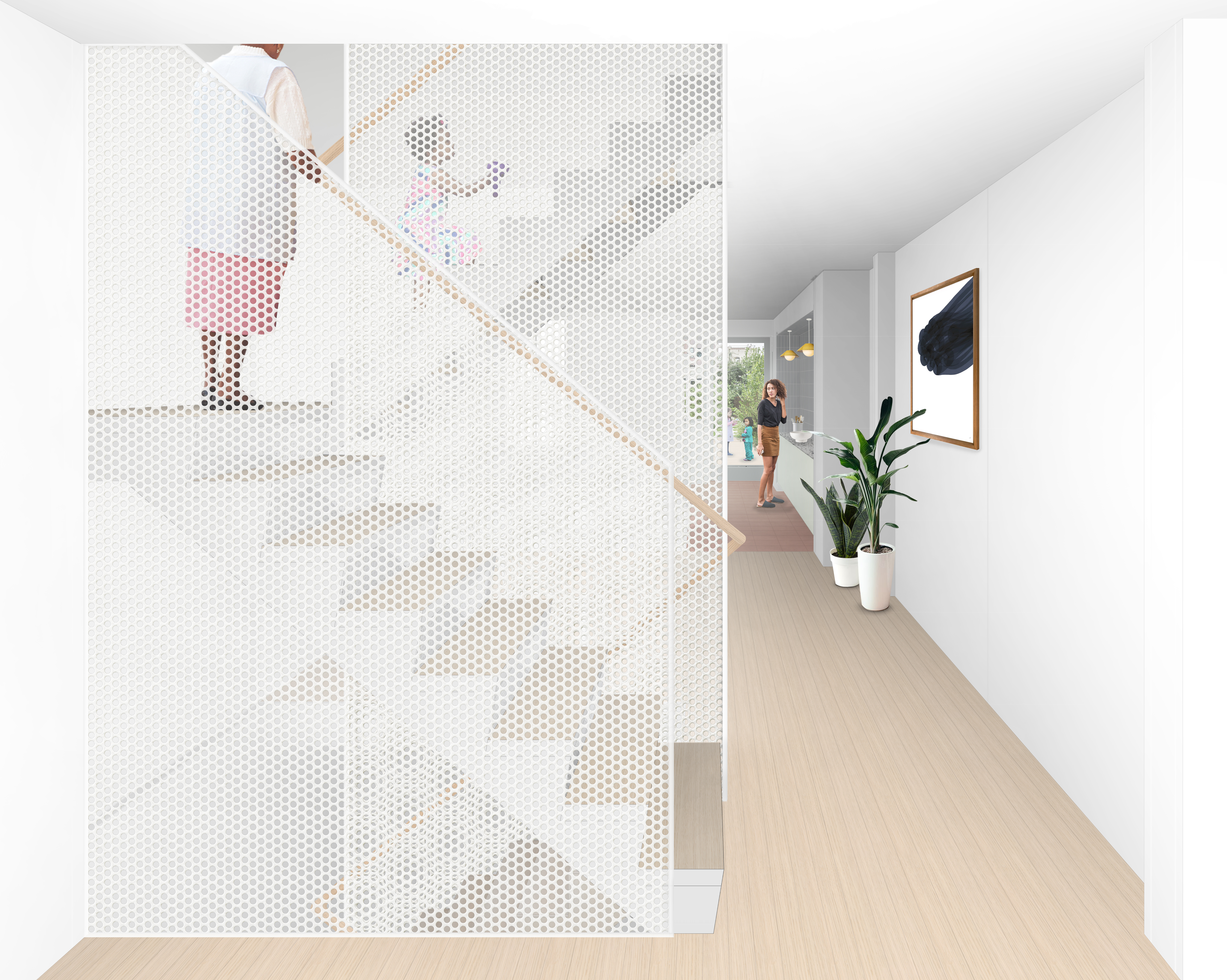We envision a new status quo where buildings use only what they can produce.
Passive House
A design standard that is able to reduce heating and cooling energy usage of a building by 80-90%. At their core, Passive Houses are a high performance thermal envelope. A significant amount of exterior insulation, triple glazed and gasketed windows, and an air barrier system work together to create very comfortable interior environments. Unlike traditional homes with drafty exterior envelopes, Passive Houses use a ventilation system that brings in the fresh air, which is filtered and mixed with the conditioned air inside the envelope. This results in superior indoor air quality and very quiet interiors.
A design standard that is able to reduce heating and cooling energy usage of a building by 80-90%. At their core, Passive Houses are a high performance thermal envelope. A significant amount of exterior insulation, triple glazed and gasketed windows, and an air barrier system work together to create very comfortable interior environments. Unlike traditional homes with drafty exterior envelopes, Passive Houses use a ventilation system that brings in the fresh air, which is filtered and mixed with the conditioned air inside the envelope. This results in superior indoor air quality and very quiet interiors.
Operational Energy
This term describes the energy required to run a building over its lifetime including the heating and cooling systems, lighting, water and refrigeration. Globally, the built environment contributes 30% to CO2 emissions each year. In order to meet climate goals, it is imperative to minimize buildings operational energy by reducing energy demand, installing high performance systems, and using renewable resources.
This term describes the energy required to run a building over its lifetime including the heating and cooling systems, lighting, water and refrigeration. Globally, the built environment contributes 30% to CO2 emissions each year. In order to meet climate goals, it is imperative to minimize buildings operational energy by reducing energy demand, installing high performance systems, and using renewable resources.
Operable Exterior Shades
Solar heat gain, or heat gained from the sun, can significantly increase the interior temperature of buildings. While this can be beneficial during the winter months, during the summer it means that a cooling system has to work even harder to keep interior spaces comfortable. Solar shading is a passive strategy for controlling the amount of solar heat gain in a building. The addition of operable exterior shades can significantly minimize the solar heat gain and thereby reduce the operation energy demands of a building. It is important to note here that these are only effective if used on the exterior of the building in order to stop the UV rays before they penetrate the glass.
Solar heat gain, or heat gained from the sun, can significantly increase the interior temperature of buildings. While this can be beneficial during the winter months, during the summer it means that a cooling system has to work even harder to keep interior spaces comfortable. Solar shading is a passive strategy for controlling the amount of solar heat gain in a building. The addition of operable exterior shades can significantly minimize the solar heat gain and thereby reduce the operation energy demands of a building. It is important to note here that these are only effective if used on the exterior of the building in order to stop the UV rays before they penetrate the glass.
Air Tight Vapor Barrier
This membrane's role within the exterior assembly of a building is to prevent unwanted air infiltration and heat transmission, eliminating the drafts that leave a room feeling too cold in the winter and too hot in the summer. Intelligent membranes allow for variable vapor permeability, providing the maximum protection against moisture damage in the wall assembly.
This membrane's role within the exterior assembly of a building is to prevent unwanted air infiltration and heat transmission, eliminating the drafts that leave a room feeling too cold in the winter and too hot in the summer. Intelligent membranes allow for variable vapor permeability, providing the maximum protection against moisture damage in the wall assembly.
Solar Energy
The addition of solar arrays to harness the sun's energy is a fantastic way to power high-performance building systems, making it simple to offset already lowered operational energy and reach net zero. This reduces reliance on fossil fuels and on a centralized energy grid, increasing the self-reliance of a building
The addition of solar arrays to harness the sun's energy is a fantastic way to power high-performance building systems, making it simple to offset already lowered operational energy and reach net zero. This reduces reliance on fossil fuels and on a centralized energy grid, increasing the self-reliance of a building





